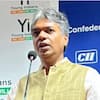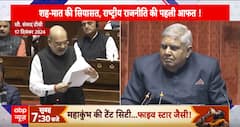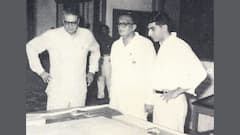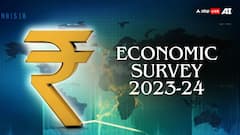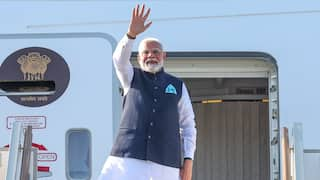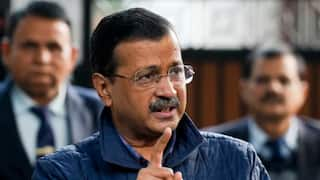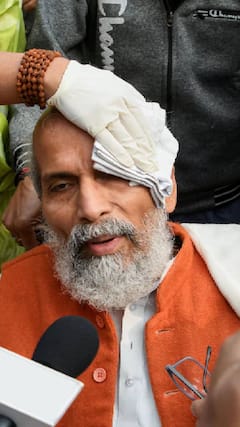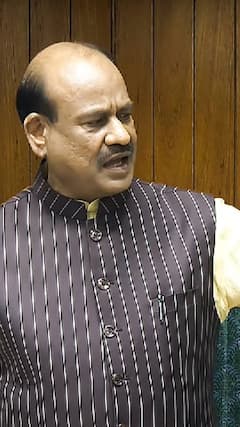India moving towards 'One Tax, One Market, One Nation': Addl. Secy Goyal

New Delhi [India], July 4 (ANI): Lauding the satisfactory implementation of the Goods and Services Tax (GST), Additional Secretary of the GST Council, Arun Goyal on Tuesday said India is slowly moving towards a 'One Tax, One Market, One Nation' regime.
"An analysis of the GST has shown that the implementation happened as we expected. Also, 22 states have dismantled tax barriers post the GST. This shows that GST has been taken in the right spirit. We are receiving good feedback," Goyal told ANI here.
Dismissing the requirement of a computer to function post the new tax regime, Goyal clarified that businesses need not change their operation cycle, adding that computers are required only to file for the GST, which is a monthly affair.
"There is a myth that has been spread on various social media platforms. However, the GST does not require any business to change the way they operate. Once a month, while filing for the tax, a computer is required. However, there is no compulsion," he said.
The GST council is slated to conduct meetings on the first Saturday of every month for the first three months, whereby any changes, if necessary, will be discussed.
"The council will be meeting to take stock of the implementation, on the first Saturday of every month. Any mid-course corrections, if required, will be deliberated upon," said Goyal.
The GST, which was rolled out at midnight on June 30, is expected to benefit all the stakeholders namely industry, government and consumer as it will lower the cost of goods and services give a boost to the economy and make the products and services globally competitive, giving a major boost to 'Make in India' initiative.
Under the GST regime, exports will be zero-rated in entirety unlike the present system where refund of some of the taxes does not take place due to fragmented nature of indirect taxes between the Centre and the States.
However, the GST will make India a common market with common tax rates and procedures and remove economic barriers.
The GST is largely technology driven and will reduce the human interface to a great extent. The GST is expected to improve the Ease of Doing Business in India.
In a majority of supplies of goods, the tax incidence approved by the GST Council is much lower than the present combined indirect tax rates levied [on account of central excise duty rates/embedded central excise duty rates/service tax post-clearance embedding, VAT rates or weighted average VAT rates, cascading of VAT over excise duty and tax incidence on account of CST, Octroi, Entry Tax, etc.] by the Centre and State(s).
On March 29 this year, the Finance Minister of India tabled four GST Bills for consideration and passage in the Lok Sabha namely The Central Goods and Services Tax (CGST) Bill, 2017, The Integrated Goods and Services Tax (IGST) Bill, 2017, The Union Territories Goods and Services Tax (UTGST) Bill, 2017 and the GST (Compensation to States) Bill, 2017.
They were passed by the Lok Sabha on March29, 2017 and by the Rajya Sabha on 6 April, 2017.
The GST Council has decided the final structure of GST as follows:
• The threshold limit for exemption from levy of GST is Rs. 20 lakh for the States except for the Special Category, where it is Rs 10 Lakh.
• A four slab tax rate structure of 5 percent, 12 percent, 18 percent and 28 percent has been adopted for GST.
• A cess would be levied on certain goods such as luxury cars, aerated drinks, and pan masala and tobacco products, over and above the GST rate of 28 percent for payment of compensation to the states.
• The threshold for availing the Composition scheme is Rs. 75 lakhexcept for special category States where it is Rs. 50 lakh and they are required to file quarterly returns only. Certain categories of manufacturers, service providers (except restaurants) are out of the Composition Scheme.
Other important features of the GST are:-
· The GST envisages all transactions and processes to be done only through electronic mode, to achieve non-intrusive administration. This will minimise tax payer's physical interaction with the tax officials.
· The GST provides for the facility of auto-populated monthly returns and annual return.
· It also facilitates the taxpayers by prescribing grant of refund within 60 days, and provisional release of 90 percent refund to exporters within seven days. (ANI)
This story has not been edited. It has been published as provided by ANI
Trending News
Top Headlines

